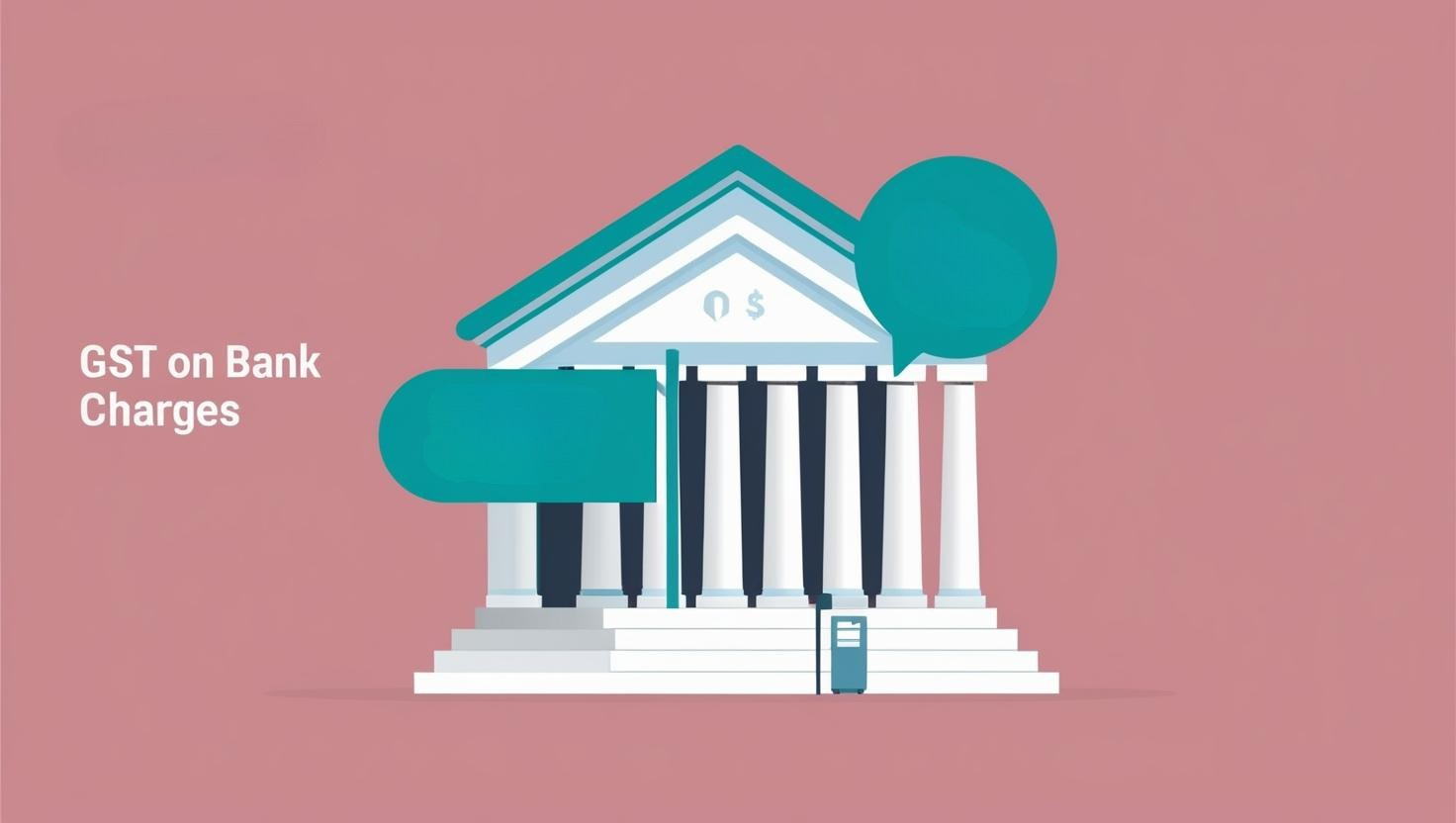Banks requires the account holders to maintain a certain minimum average balance in their savings or current account during a month. This threshold is known as Average Monthly Balance. If the customer is unable to maintain the required minimum balance, banks charge AMB charges incl GST from the account holders. However, is it important to be aware of the AMB charges in GST to avoid the additional charges.

What does AMB Charge Incl GST Mean?
Average Monthly Balance (AMB) is the average balance that a bank requires a customer to maintain in their savings or current account over a specific period, typically a month or a quarter.
AMB charges are levied by the bank towards failure of account holders to maintain the AMB in their accounts. It may vary depending on the bank, account type, and minimum balance requirement.
For example, if the minimum average balance requirement for a savings account is Rs.10,000, and the actual average balance maintained by the customer during a month is Rs.8,000, the shortfall is Rs.2,000. If the bank charges 1% of the shortfall as AMB charges, the customer will be charged Rs.20 as AMB fees.
AMB transactions in banks involve two parties – the account holder and the bank. The bank sets the minimum average balance requirement for each type of account, and the account holder is responsible for maintaining the required balance.
Customers are charged tax on top of fees by the bank. These charges can be easily avoided if you monitor your account regularly and make the necessary withdrawals and deposits to ensure that there is enough money to maintain the average balance.
AMB CHRG INCL GST is the abbreviated version for “Average Monthly Balance Charge Including Goods and Services Tax.” This term is specifically used to describe a specific fee that the banks might charge from their customers. Here’s a detailed explanation of what it means –
- Average Monthly Balance (AMB) – The average balance is the amount a bank account holder must keep in their savings or current account over a specific period, usually calculated monthly or quarterly. Banks require a minimum average balance to ensure a certain level of funds in the account. If the balance falls below this amount, the bank may charge a fee.
- Charge (CHRG) – This refers to the fee charged when an account holder fails to maintain the required minimum average monthly balance. The fee amount varies based on the bank’s policies and the type of account.
- Including Goods and Services Tax (INCL GST) – This means that the charge for not maintaining the minimum balance includes Goods and Services Tax (GST), a uniform indirect tax applied to most goods and services. Under GST, it is added to the base charge, increasing the total fee.
Importance of AMB Charges Incl GST
For Individual Account Holders
- Financial Management: Understanding AMB charges helps individuals manage their bank accounts efficiently. By being aware of minimum balance requirements, account holders can avoid fees that can accumulate over time.
- Budget Planning: Knowing potential fees, including GST, allows for better budgeting. Individuals can allocate funds wisely to meet minimum balance requirements and avoid charges, freeing up money for savings or other expenses.
- Financial Literacy: Learning about AMB charges enhances financial literacy, empowering individuals to make informed banking decisions and develop stronger financial strategies.
For Businesses
- Cash Flow Management: For businesses, especially SMEs, managing cash flow is crucial. Being aware of AMB charges, including GST, helps ensure efficient account management and proper fund allocation to avoid unnecessary fees.
- Operational Costs: AMB charges can become a significant operational cost if not managed carefully. Planning for these charges helps businesses reduce overhead expenses and improve profitability.
- Compliance and Financial Planning: Understanding AMB charges and GST is essential for complying with banking and tax regulations. Proper financial planning and reporting prevent legal issues and ensure financial accuracy.
General Importance
- Economic Decisions: Knowledge of AMB charges helps both individuals and businesses make informed economic decisions, such as choosing the right bank or negotiating account terms.
- Enhancing Customer-Bank Relationship: A clear understanding of AMB charges promotes better communication and fosters a positive relationship between customers and banks, increasing customer loyalty.
- Transparency and Trust: Understanding these fees supports transparency in banking, building trust between banks and customers, and reducing the likelihood of disputes or dissatisfaction.
Availability of ITC on the GST Paid on AMB Charges
- For Individuals – According to the provisions of GST, individuals are not eligible to claim an Input Tax Credit of the GST paid on AMB charges since AMB charges are considered to be banking service charges that are exempt from GST. Therefore, individuals cannot claim any input tax credit on the GST paid on AMB charges.
- For Businesses/Corporates – Businesses registered under GST can claim the input tax credit for the GST paid on AMB charges if they use a bank account for business purposes. AMB charges incurred by a business are considered business expenses and are eligible for input tax credit under GST. However, if the bank account is used for personal purposes, taxpayer cannot claim the input tax credit of GST paid on AMB charges.
You can also claim the ITC on GST paid on AMB charges if the bank provides a tax invoice for the same or any other document as a substitute of tax invoice which should clearly mention the GST paid on AMB charges.
FAQs
Q1. What are AMB charges?
AMB charges are the charges or fees charged by a bank from the customer if he/she fails to maintain the average monthly balance fixed by the bank.
Q2. Are there any ways to reduce or waive AMB charges?
Yes, there are several ways to reduce or waive AMB charges. One effective approach is to negotiate with your bank, as some institutions may offer waivers or reductions based on your banking relationship, account history, or if you hold multiple products with them. Additionally, many banks provide accounts with lower AMB requirements or specific accounts that offer zero AMB for certain customer categories, such as students or senior citizens.
Q3. How does GST apply to AMB charges?
GST (Goods and Services Tax) applies to AMB (average monthly balance) charges because these fees are classified as services provided by banks, making them subject to GST. The applicable GST rate is added to the AMB charges, which increases the total amount payable by the account holder if the AMB requirement is not met. This integration of GST into banking services aligns with the broader goal of creating a uniform tax structure across goods and services, ensuring that all service-related fees are taxed appropriately.
Q4. What is AMB CHRG INCL GST?
AMB CHRG INCL GST” stands for “Average Monthly Balance Charges Including GST.” This fee applies to savings or current accounts when the account balance falls below the average monthly balance (AMB) threshold set by the bank. If the account holder fails to maintain the minimum average balance, the bank levies a fee known as an AMB charge which is inclusive of the GST applicable on it.
